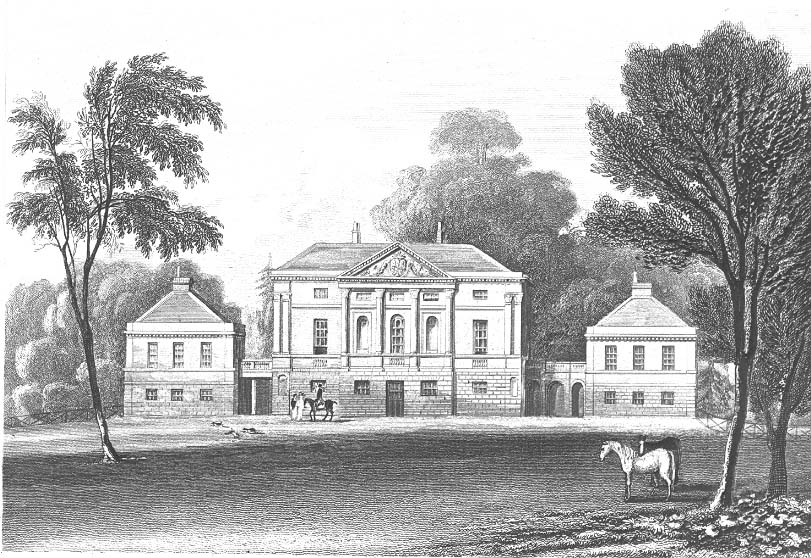Hare Hall on:
[Wikipedia]
[Google]
[Amazon]
 Hare Hall is a house and grounds located in
Hare Hall is a house and grounds located in
 Hare Hall is a house and grounds located in
Hare Hall is a house and grounds located in Gidea Park
Gidea Park () is a neighbourhood in the east of Romford in the London Borough of Havering, south-east England.
Predominantly affluent and residential, it was historically within the county of Essex and saw significant expansion in the early 20t ...
in the London Borough of Havering
The London Borough of Havering () in East London, England, forms part of Outer London. It has a population of 259,552 inhabitants; the principal town is Romford, while other communities are Hornchurch, Upminster, Collier Row and Rainham. The ...
, east London
London is the capital and largest city of England and the United Kingdom, with a population of just under 9 million. It stands on the River Thames in south-east England at the head of a estuary down to the North Sea, and has been a majo ...
.
It was built in 1769–70 as a country house for John A. Wallinger and since 1921 has housed the Royal Liberty School
The Royal Liberty School is a secondary school for boys aged 11 to 16, located in Gidea Park in the London Borough of Havering, England.
The school is situated on Upper Brentwood Road about 400 metres north of Gidea Park railway station, and a ...
.
The Palladian
Palladian architecture is a European architectural style derived from the work of the Venetian architect Andrea Palladio (1508–1580). What is today recognised as Palladian architecture evolved from his concepts of symmetry, perspective and ...
mansion was built to designs by James Paine, who included it in his published ''Plans''.''Plans'', vol. II, plates 60-63, according to Howard Colvin
Sir Howard Montagu Colvin (15 October 1919 – 27 December 2007) was a British architectural historian who produced two of the most outstanding works of scholarship in his field: ''A Biographical Dictionary of British Architects, 1600–1840' ...
, ''A Biographical Dictionary of British Architects, 1600-1840'', 3rd ed. 1995, ''s.v.'' "Paine, James". The main north front is of five bays, with a rusticated basement storey, above which the two upper storeys are unified by a giant portico and pilasters at the angles.
Attached to the south front by short corridors there were pavilions containing service rooms. The principal rooms were on the first floor, and were approached by a central staircase with curved ends and a wrought iron balustrade.
The main front was of Portland stone
Portland stone is a limestone from the Tithonian stage of the Jurassic period quarried on the Isle of Portland, Dorset. The quarries are cut in beds of white-grey limestone separated by chert beds. It has been used extensively as a building sto ...
, but the south front was of red brick. In 1896 the house was considerably enlarged on that side by filling in the space between the pavilions. At the stud maintained at Hare Park, Cherimoya
The cherimoya (''Annona cherimola''), also spelled chirimoya and called chirimuya by the Inca people, is a species of edible fruit-bearing plant in the genus '' Annona'', from the family Annonaceae, which includes the closely related sweetsop a ...
, foaled in 1908, was bred by the South African mining entrepreneur and horseman William Broderick Cloete
thumb
William Broderick Cloete (1851 – 7 May 1915) was a South African-born British industrialist active in the border zones between Mexico and the United States in the late 19th century. He and Robert Symon, an industrialist from Boston ...
; after Cloete's death in the sinking of the ''Lusitania
Lusitania (; ) was an ancient Iberian Roman province located where modern Portugal (south of the Douro river) and
a portion of western Spain (the present Extremadura and the province of Salamanca) lie. It was named after the Lusitani or Lusita ...
'', during the First World War
World War I (28 July 1914 11 November 1918), often abbreviated as WWI, was one of the deadliest global conflicts in history. Belligerents included much of Europe, the Russian Empire, the United States, and the Ottoman Empire, with fightin ...
Hare Park became Hare Hall Camp and housed the 2nd Battalion of the Artists Rifles
The 21 Special Air Service Regiment (Artists) (Reserve), historically known as The Artists Rifles is a regiment of the Army Reserve. Its name is abbreviated to 21 SAS(R).
Raised in London in 1859 as a volunteer light infantry unit, the regimen ...
.
Notes
External links
* Houses in the London Borough of Havering {{London-struct-stub